55
Atari Jaguar CD
The Atari Jaguar CD was an add-on peripheral for the Atari Jaguar, released in 1995. This accessory allowed the Jaguar to play CD-ROM based games, adding an array of potential multimedia capabilities to the system. In addition to games, the Jaguar CD supported music CDs and had a virtual light machine for visualizing music, a feature ahead of its time.

Atari Jaguar CD
Year
1995
Launch Price
$149
With Inflation
$285.89
Year
1995
Launch Price
$149
With Inflation
$285.89
Launch Price Analysis: The Jaguar CD was an additional cost on top of the Jaguar system itself, making the combined price quite high for consumers. The combined cost of the Jaguar and its CD add-on made it less competitive when compared to more established CD-based systems like the Sega Saturn or Sony PlayStation, both of which had stronger game libraries and wider developer support.
54
Sega 32X
The Sega 32X, released in 1994, was an add-on for the Sega Genesis (or Mega Drive outside North America) that aimed to enhance the console's graphics and processing capabilities. It allowed the Genesis to run 32-bit software, bridging the gap between the Genesis and the newer Sega Saturn. The device plugged directly into the Genesis and had its cartridge slot for 32X games.

Sega 32X
Year
1994
Launch Price
$159
With Inflation
$314.14
Year
1994
Launch Price
$159
With Inflation
$314.14
Launch Price Analysis: The Sega 32X was priced lower than a brand-new console but more expensive than most game cartridges. The idea was to give gamers a cheaper alternative to buying the Sega Saturn. However, this strategy was questionable as it confused the market. Many consumers were hesitant to invest in an add-on when they could save for the more advanced Sega Saturn. As a result, despite its competitive price point, the 32X is often considered a misstep in Sega's hardware strategy.
53
VTech CreatiVision
VTech's CreatiVision, released in the early 1980s, was a hybrid video game console and personal computer. The Hong Kong-based company VTech designed the system with unique features, combining gaming capabilities with basic computing tasks. It used ROM cartridges for games, and its library, though small, covered various genres from action to educational titles. The CreatiVision also boasted a distinctive design, with two detachable controllers that could be combined to form a simple computer keyboard.

VTech CreatiVision
Year
1981
Launch Price
$99
With Inflation
$314.14
Year
1981
Launch Price
$99
With Inflation
$314.14
Launch Price Analysis: The VTech CreatiVision found itself in a challenging position. Its dual nature as both a gaming console and a rudimentary computer made it a niche product, and its price reflected this hybrid functionality. When compared to more dedicated game systems like the Atari 2600 or the emerging Commodore 64 computer, the CreatiVision struggled to find a clear market position, making its pricing a challenging aspect of its overall market appeal.
52
Nintendo GameCube
Released in 2001, the Nintendo GameCube was the company's fourth home console. Distinct for its compact, cube-shaped design and miniDVD game discs, the GameCube boasted a robust library with classics like "The Legend of Zelda: Wind Waker" and "Super Smash Bros. Melee." It also introduced the first wireless controller from Nintendo, the WaveBird.
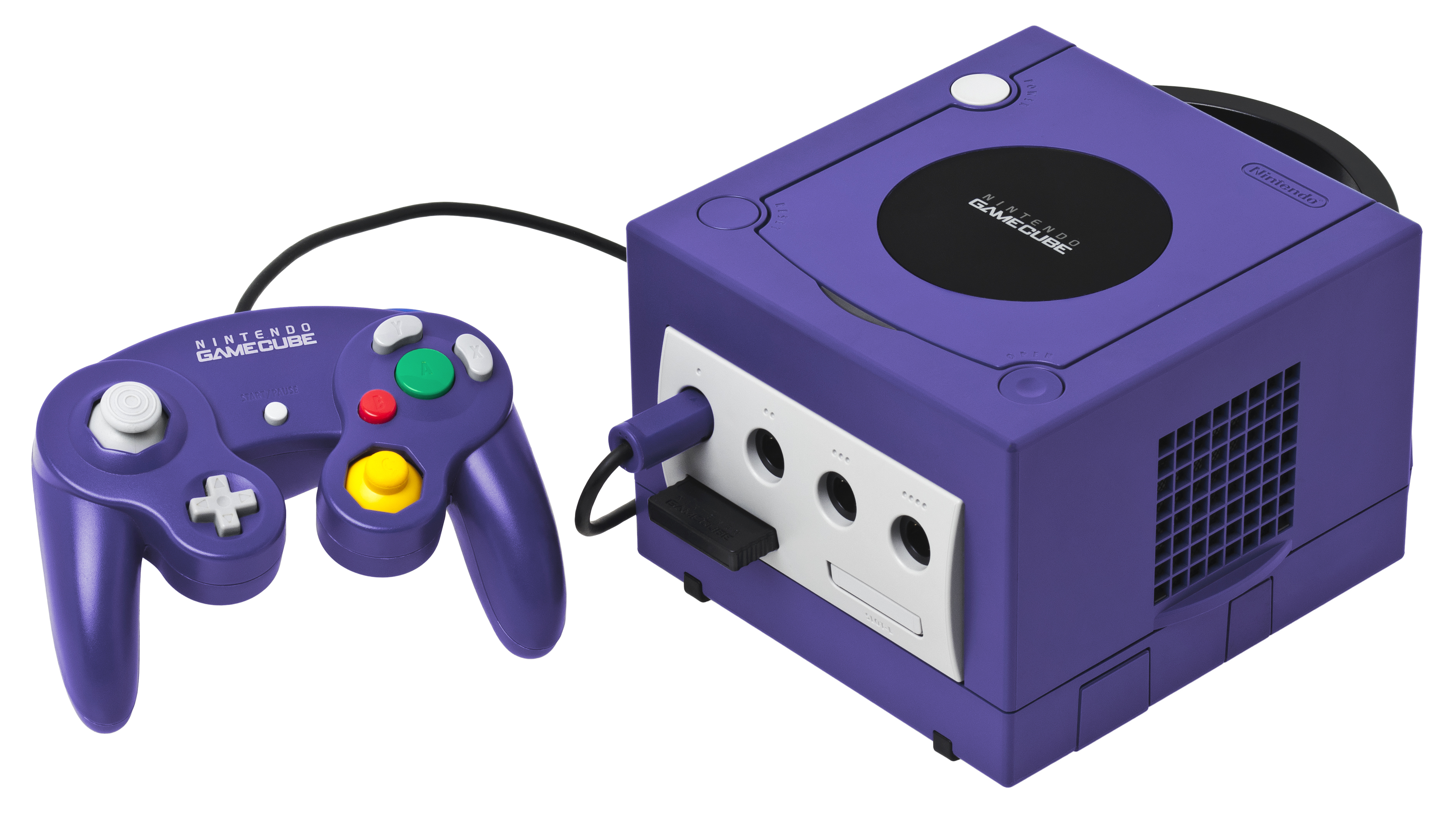
Nintendo GameCube
Year
2001
Launch Price
$199
With Inflation
$326.57
Year
2001
Launch Price
$199
With Inflation
$326.57
Launch Price Analysis: The GameCube was positioned as a more affordable option compared to its primary competitors, the PlayStation 2 and the Xbox. However, despite its competitive price point and unique features, it struggled to outpace the sales of its rivals, largely due to its limited third-party support and the dominance of the PS2 in the market.
51
Sega Dreamcast
The Sega Dreamcast, released in 1999, was Sega's last foray into the home console market. Known for its futuristic design and innovative features, the Dreamcast was the first console to include a built-in modem for online play. It also had a unique controller with a VMU (Visual Memory Unit) slot that could act as a secondary screen or standalone mini-console.
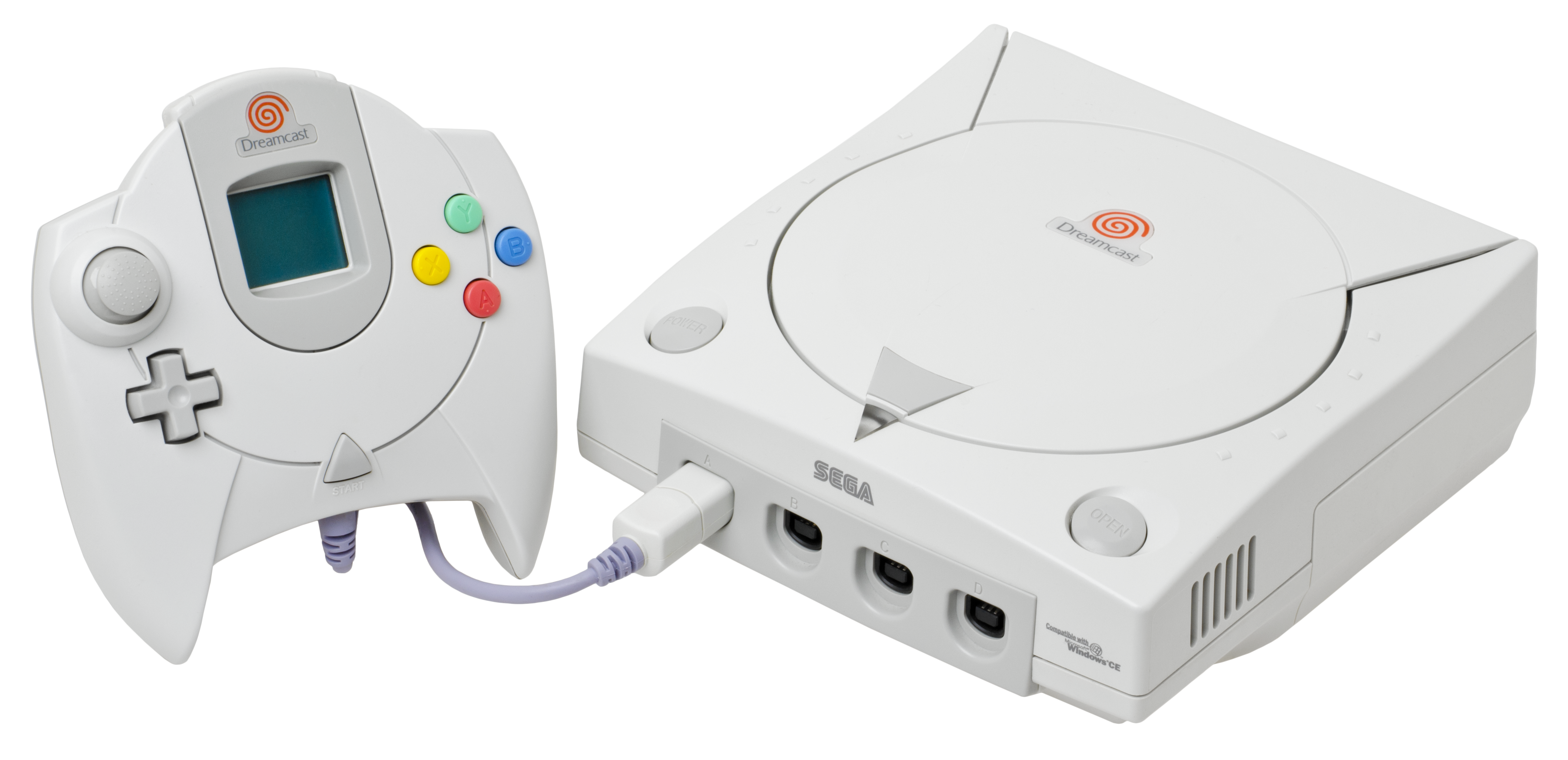
Sega Dreamcast
Year
1999
Launch Price
$199
With Inflation
$357.08
Year
1999
Launch Price
$199
With Inflation
$357.08
Launch Price Analysis: The Dreamcast was competitively positioned against its immediate competition. The system was launched with a price that under-cut the Sony PlayStation and was close to the price of the Nintendo 64. However, with the looming release of the PlayStation 2, which boasted DVD playback and more advanced hardware, the Dreamcast faced stiff competition, eventually leading to its early exit from the market despite its initial competitive pricing.
50
Nintendo Wii
Introduced in 2006, the Nintendo Wii was a revolutionary home console that brought motion controls to the forefront of gaming. With its unique Wiimote and Nunchuk controllers, the Wii allowed players to physically interact with games in ways never before seen. Games like "Wii Sports" and "The Legend of Zelda: Twilight Princess" utilized this new form of interaction, and the console also introduced the Mii avatars, allowing players to create virtual versions of themselves.
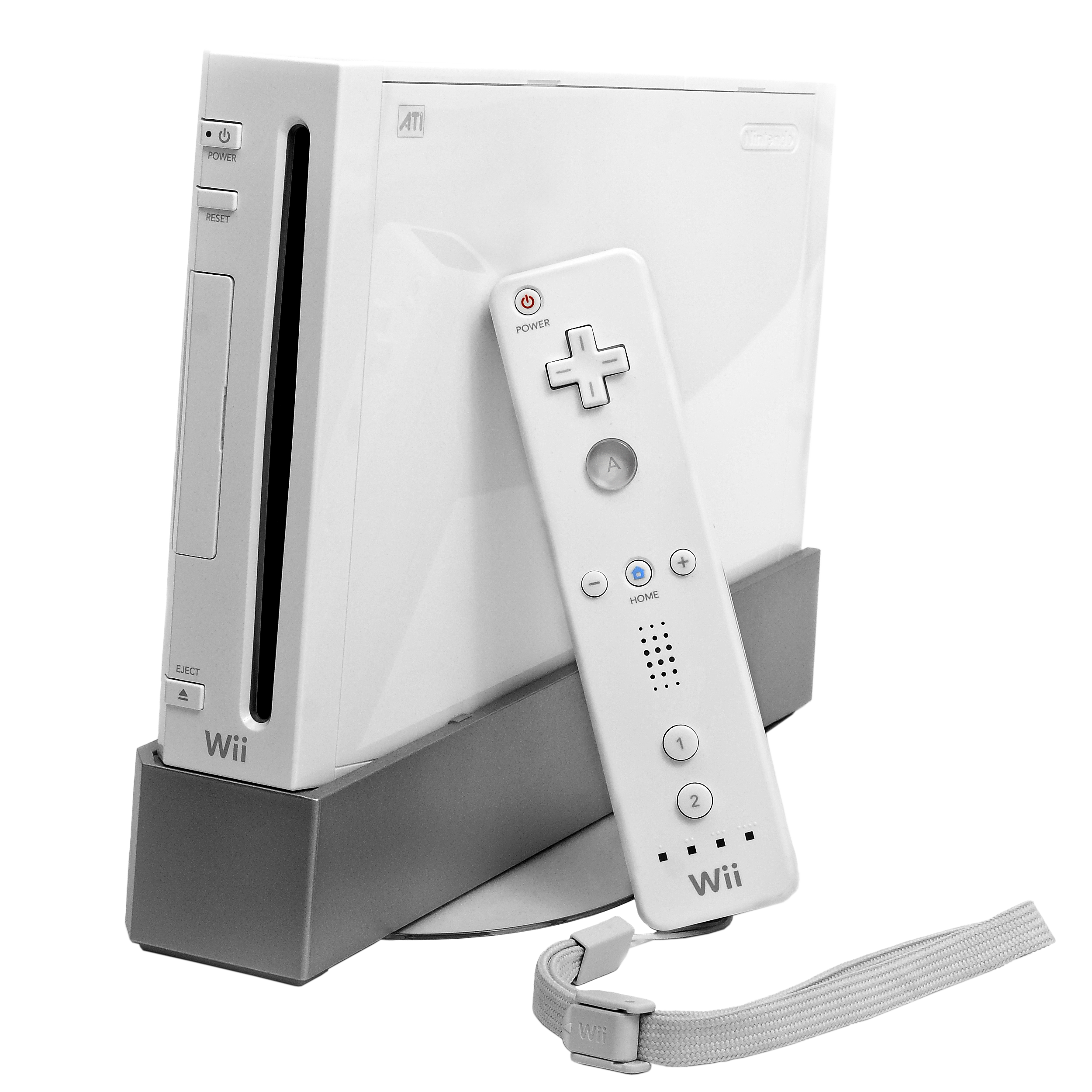
Nintendo Wii
Year
2006
Launch Price
$249
With Inflation
$363.86
Year
2006
Launch Price
$249
With Inflation
$363.86
Launch Price Analysis: The Nintendo Wii was strategically placed at a more affordable point compared to its competitors, the PlayStation 3 and the Xbox 360. The Wii's lower price point, combined with its innovative motion controls and family-friendly games, allowed it to capture a broad audience, making it an immense success and outselling its competition.
49
Nintendo Switch
Launched in 2017, the Nintendo Switch revolutionized the gaming landscape with its hybrid design, allowing players to "switch" between handheld and docked TV modes. The system's unique Joy-Con controllers can be attached to the main unit for handheld play or detached for tabletop and TV modes. The versatility of the Switch has attracted a wide range of gamers, leading to hits like "The Legend of Zelda: Breath of the Wild" and "Animal Crossing: New Horizons."

Nintendo Switch
Year
2017
Launch Price
$299
With Inflation
$366.12
Year
2017
Launch Price
$299
With Inflation
$366.12
Launch Price Analysis: The Nintendo Switch was set at a mid-range point, strategically placed between premium consoles like the PlayStation 4 and Xbox One and more affordable handhelds. Despite being in this middle ground, the Switch's unique selling proposition and strong game lineup ensured its competitive edge, allowing it to carve out a significant market share.
48
Atari 7800
The Atari 7800 ProSystem, commonly referred to as the Atari 7800, was introduced in 1986 as the successor to the Atari 5200. Boasting superior graphics and sound capabilities, the 7800 was designed to re-establish Atari's dominance in the console market, especially after the video game crash of 1983. A significant feature of the 7800 was its backward compatibility with the 2600, allowing users to play their extensive library of 2600 games on the new system.

Atari 7800
Year
1986
Launch Price
$139
With Inflation
$371.77
Year
1986
Launch Price
$139
With Inflation
$371.77
Launch Price Analysis: The Atari 7800 was competitive, especially given its backward compatibility feature. It was introduced at a price lower than its chief competitors, like the Nintendo Entertainment System (NES) and the Sega Master System. However, despite its price advantage, the Atari 7800 faced tough competition from these newer systems, which had more modern games and better third-party support.
47
Nintendo 64
The Nintendo 64 (N64), launched in 1996, was Nintendo's third home console and its first foray into the world of 3D gaming. Renowned for classics like "The Legend of Zelda: Ocarina of Time" and "Super Mario 64," the N64 utilized cartridges, a decision that differentiated it from competitors who were moving towards CD-based systems.

Nintendo 64
Year
1996
Launch Price
$199
With Inflation
$372.90
Year
1996
Launch Price
$199
With Inflation
$372.90
Launch Price Analysis: The N64 was generally competitive with its main rival, the Sony PlayStation. The decision to stick with cartridges, while having benefits in terms of load times, also meant that N64 games were often pricier than their CD counterparts. This pricing dynamic was a point of contention for some consumers, especially as the PlayStation built a vast and varied game library.
46
Nintendo Switch OLED model
Announced in 2021, the Nintendo Switch OLED model is a version of the original Switch but with an OLED display, offering more vibrant colors and better contrast ratios. This model retains all the functionalities of the original Switch, including the hybrid design but also provides a slightly larger screen and enhanced audio capabilities for handheld and tabletop play.

Nintendo Switch OLED model
Year
2021
Launch Price
$349
With Inflation
$403.41
Year
2021
Launch Price
$349
With Inflation
$403.41
Launch Price Analysis: The Switch OLED model is positioned higher than the standard Nintendo Switch but offers a premium display experience as its main selling point. While it competes directly with the standard Switch model, its price is justified for those seeking a better display quality, especially in handheld mode.
45
Super Nintendo Entertainment System (SNES)
Launched in 1990 in Japan and 1991 in North America, the Super Nintendo Entertainment System (SNES) was Nintendo's second home console, following the Nintendo Entertainment System (NES). Boasting 16-bit graphics, enhanced audio capabilities, and a rich library of iconic games like "Super Mario World," "The Legend of Zelda: A Link to the Past," and "Super Metroid," the SNES solidified Nintendo's position as a leading force in the gaming industry.

Super Nintendo Entertainment System (SNES)
Year
1991
Launch Price
$199
With Inflation
$426.01
Year
1991
Launch Price
$199
With Inflation
$426.01
Launch Price Analysis: The SNES was competitively positioned against its main rival, the Sega Genesis (or Mega Drive in regions outside North America). While both systems jockeyed for position throughout the 16-bit era, the SNES's pricing, combined with its expansive game library and Nintendo's strong brand, ensured it remained a compelling option for gamers throughout its lifecycle.
44
Nintendo Wii U (Deluxe)
Launched in 2012, the Nintendo Wii U was the company's first foray into HD gaming and introduced a unique GamePad controller with an embedded touchscreen. This allowed for different multi-screen gameplay experiences and off-TV play. Notable titles for the system include "Super Mario 3D World" and "The Legend of Zelda: Breath of the Wild."

Nintendo Wii U (Deluxe)
Year
2012
Launch Price
$349
With Inflation
$444.09
Year
2012
Launch Price
$349
With Inflation
$444.09
Launch Price Analysis: The Nintendo Wii U Deluxe was set higher than the basic model (which was $299), offering more storage and additional accessories. However, it faced stiff competition from the PlayStation 4 and Xbox One. Despite its innovative features, the Wii U's price point combined with market confusion (some consumers mistakenly believed it was just an upgrade to the Wii) led to it being overshadowed by its competitors.
43
Sega Genesis
Also known as the Mega Drive outside of North America, the Sega Genesis debuted in 1988 and rapidly became Sega's most successful console. With its 16-bit graphics and a robust library, including titles like "Sonic the Hedgehog", the Genesis was a key player in the 16-bit era, competing fiercely with the Super Nintendo Entertainment System (SNES).

Sega Genesis
Year
1989
Launch Price
$189
With Inflation
$445.22
Year
1989
Launch Price
$189
With Inflation
$445.22
Launch Price Analysis: Pricing for the Genesis was competitive throughout its lifecycle. Initially, the Genesis was priced lower than the SNES, making it an attractive option for many gamers. Additionally, Sega often bundled popular titles like "Sonic the Hedgehog" with the console, further enhancing its value proposition. Throughout the 16-bit era, Sega and Nintendo would engage in various price wars, each trying to gain a competitive edge.
42
TurboGrafx-16
The TurboGrafx-16, known as the PC Engine in Japan, was released in the late 1980s and was designed to compete with the NES and later, the Sega Genesis. Developed by Hudson Soft and NEC, the system is known for its "HuCard" game cartridges, which were compact and credit card-sized. It had a strong library of games, especially in Japan, and is often fondly remembered for titles like "Bonk's Adventure" and "Castlevania: Rondo of Blood".

TurboGrafx-16
Year
1989
Launch Price
$199
With Inflation
$471.21
Year
1989
Launch Price
$199
With Inflation
$471.21
Launch Price Analysis: Pricing for the TurboGrafx-16 was competitive, aiming to capture market share from Nintendo and Sega. However, in the North American market, despite its technical prowess and a library of unique games, it struggled to carve a significant niche for itself. This was partly due to the strong branding of its competitors and the TurboGrafx-16's lesser marketing push, making its price point less of a decisive factor in its market performance.
41
Casio Loopy
Casio Loopy, released in 1995, was a unique home video game console targeted primarily at young girls. Marketed exclusively in Japan, this 32-bit system had a built-in thermal color printer allowing players to print screenshots or in-game graphics as stickers. The system's games often integrated this unique feature, emphasizing creativity and customization.

Casio Loopy
Year
1995
Launch Price
$250
With Inflation
$474.60
Year
1995
Launch Price
$250
With Inflation
$474.60
Launch Price Analysis: The Casio Loopy faced limited competition in its specific target demographic. While competitively priced for its unique features, the niche nature of the product and the lack of a broad game library limited its appeal. Moreover, other consoles like the Sony PlayStation, which catered to a wider audience, overshadowed it in the general gaming market during the same era.
40
Playdia
The Playdia was a home video game console developed by Bandai and released in 1994, exclusively in Japan. It was primarily targeted towards younger children with a focus on educational titles and anime FMVs. The system had a unique design and was equipped with a single controller.
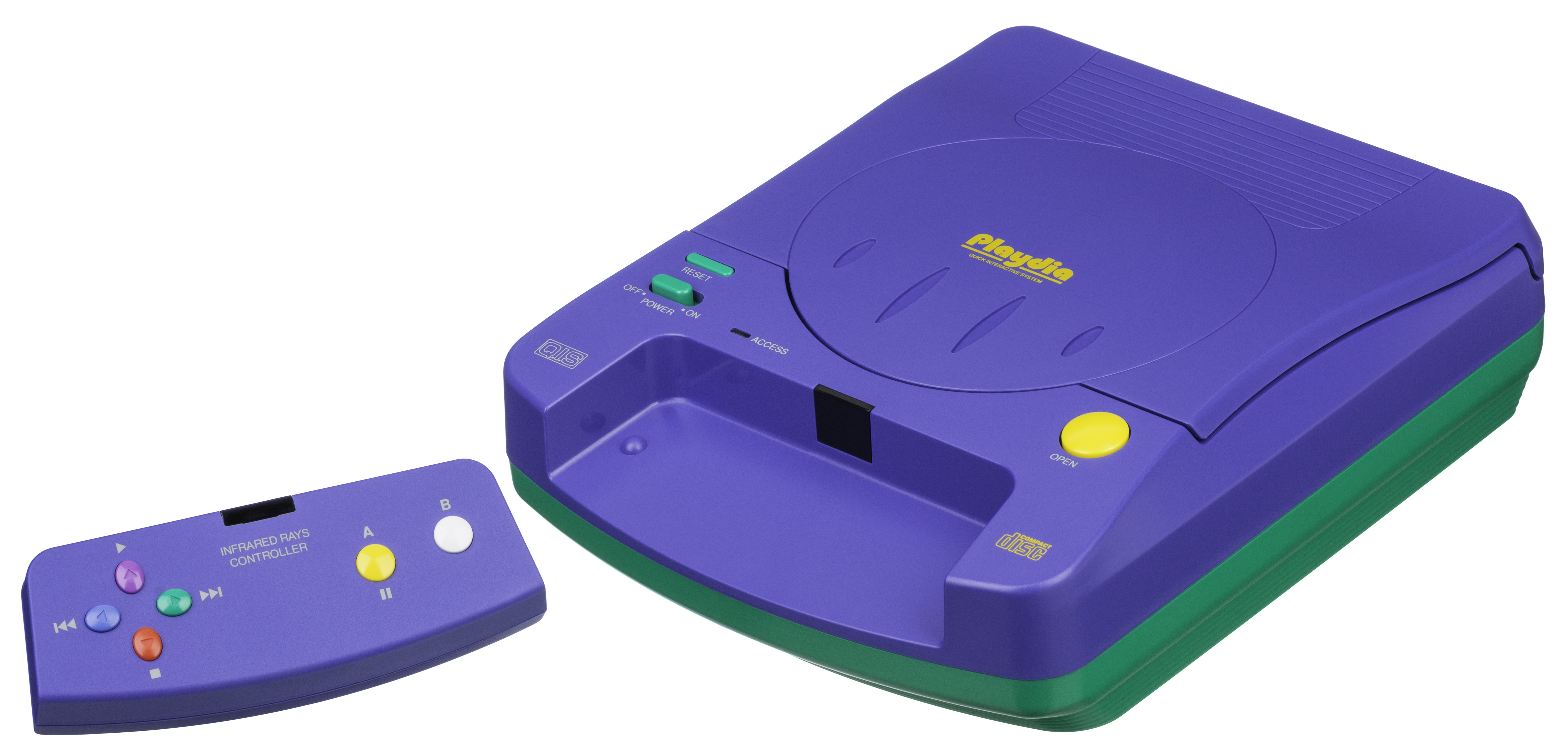
Playdia
Year
1994
Launch Price
$249
With Inflation
$482.51
Year
1994
Launch Price
$249
With Inflation
$482.51
Launch Price Analysis: The Playdia was relatively affordable, given its target audience. However, its limited gaming library, combined with its specific demographic focus, meant that it didn't pose a significant threat to more mainstream consoles in the market. The affordability was a draw for its niche, but broader market dynamics made it a minor player in the broader gaming landscape.
39
Sony PlayStation 4 Pro
Sony introduced the PlayStation 4 Pro (PS4 Pro) in 2016 as a mid-generation upgrade to the standard PS4. This version was tailored for gaming enthusiasts, offering enhanced performance, 4K resolution support, and improved graphics in certain games. The PS4 Pro was designed to provide a more immersive gaming experience, particularly for those with 4K TVs.

Sony PlayStation 4 Pro
Year
2016
Launch Price
$399
With Inflation
$489.29
Year
2016
Launch Price
$399
With Inflation
$489.29
Launch Price Analysis: The pricing of the PS4 Pro was set higher than the standard PS4, reflecting its enhanced capabilities. However, when compared to other 4K gaming solutions, the PS4 Pro offered a competitive price point, making 4K gaming more accessible to a broader audience. For gamers prioritizing performance and graphical fidelity, the PS4 Pro presented a compelling value proposition within the PlayStation ecosystem.
38
Microsoft Xbox
Launched in 2001, the Microsoft Xbox marked the tech giant's entry into the gaming console market. A powerful piece of hardware for its time, the Xbox boasted a built-in hard drive, broadband connectivity for online play, and high-quality graphics. Its robust architecture, combined with titles like "Halo: Combat Evolved," helped it establish a foothold in the gaming world.

Microsoft Xbox
Year
2001
Launch Price
$299
With Inflation
$490.42
Year
2001
Launch Price
$299
With Inflation
$490.42
Launch Price Analysis: The Xbox was competitive with its main rival at the time, the PlayStation 2. While it was initially more expensive than the PS2, its advanced features justified the price for many consumers. Microsoft's aggressive marketing, bundled games, and subsequent price cuts also helped bolster the Xbox's position in the market against its well-established competitors.
37
Sony PlayStation 4
The PlayStation 4 (PS4), Sony's eighth-generation console, was released in 2013. Designed with a focus on social gameplay and integration with other devices, the PS4 also emphasized the importance of high-quality game titles. The console boasted a powerful AMD-based architecture, making it easier for developers to create games. The PS4 quickly became known for its impressive library of exclusive titles, such as "Bloodborne," "God of War," and "Uncharted 4."

Sony PlayStation 4
Year
2013
Launch Price
$399
With Inflation
$496.07
Year
2013
Launch Price
$399
With Inflation
$496.07
Launch Price Analysis: The PS4 was launched at a price point that was deemed very competitive, especially when compared to the Xbox One, its main rival at the time. This competitive pricing, combined with a strong lineup of game titles, allowed the PS4 to gain significant traction in the market, eventually becoming the dominant console of its generation.
36
Atari Jaguar
Released in 1993, the Atari Jaguar was marketed as the first 64-bit video game console. With this advanced hardware, it aimed to outperform its competitors in terms of graphics and sound capabilities. The Jaguar boasted a unique controller with a numeric keypad and supported a range of titles, some of which showcased its technical prowess.
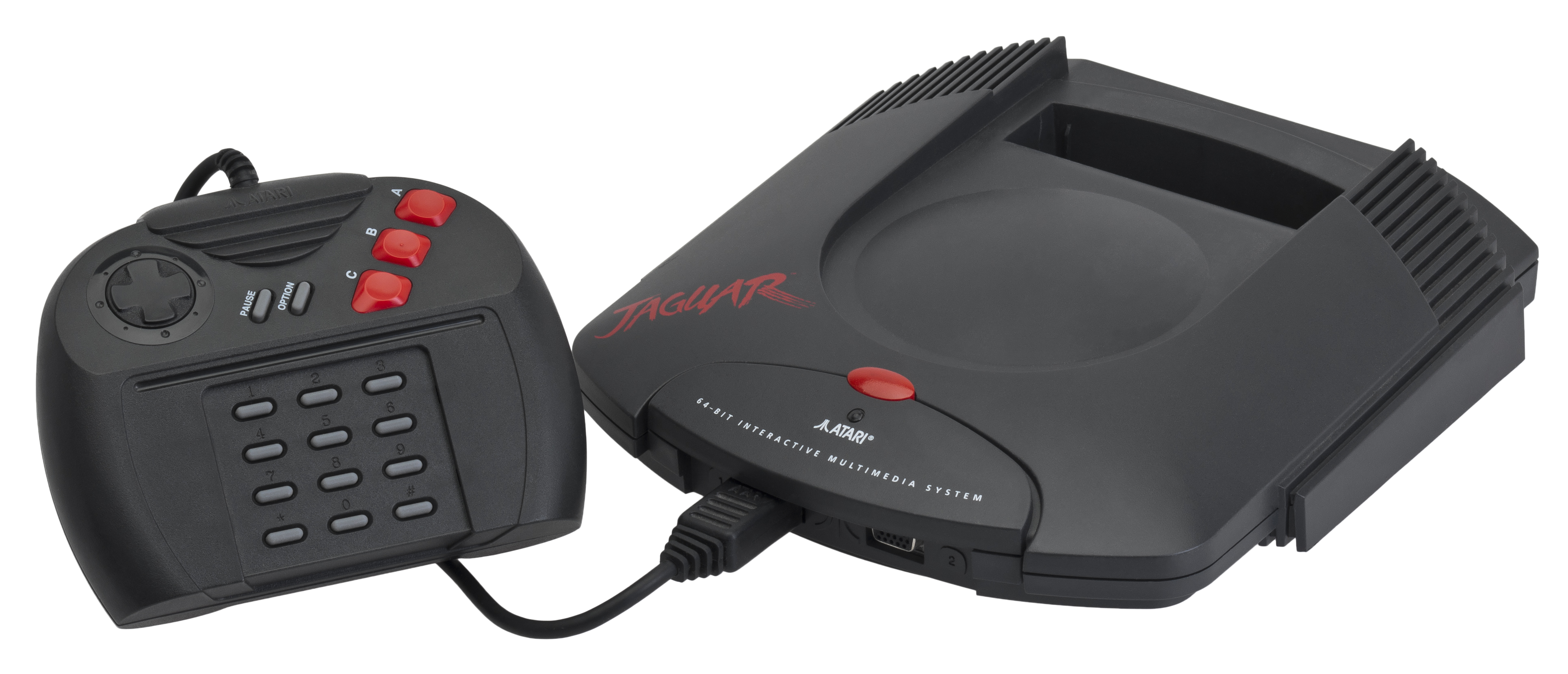
Atari Jaguar
Year
1993
Launch Price
$249
With Inflation
$500.59
Year
1993
Launch Price
$249
With Inflation
$500.59
Launch Price Analysis: The Atari Jaguar was introduced with a price point that was competitive with, and in some cases lower than, 16-bit consoles of the era, like the Sega Genesis and Super Nintendo. Despite its technical superiority on paper and its competitive pricing, the Jaguar struggled against its competition due to a lack of compelling games, questionable marketing decisions, and challenges with third-party developer support.
35
Sony PlayStation 2
The PlayStation 2 (PS2), released in 2000, is Sony's sixth-generation console and the successor to the original PlayStation. The PS2 boasted improved graphics, backward compatibility with original PlayStation games, and the ability to play DVDs, making it both a gaming console and a home entertainment unit. Titles like "Grand Theft Auto: San Andreas," "God of War," and "Shadow of the Colossus" contributed to its legendary game library.

Sony PlayStation 2
Year
2000
Launch Price
$299
With Inflation
$508.50
Year
2000
Launch Price
$299
With Inflation
$508.50
Launch Price Analysis: The PS2 was introduced at a cost that was competitive with other sixth-generation consoles like the Microsoft Xbox and the Nintendo GameCube. Over time, the PS2's diverse game library and its dual functionality as a DVD player enhanced its perceived value. Its price, combined with its offerings, positioned it favorably against its competitors, leading the PS2 to become the best-selling console of all time.
34
ColecoVision
Released in 1982, the ColecoVision sought to bring a closer-to-arcade gaming experience to the home. Offering superior graphics and sound capabilities compared to its main competitors at the time, such as the Atari 2600, it came with the promise of a future module that would make it fully compatible with the Adam home computer system.

ColecoVision
Year
1982
Launch Price
$175
With Inflation
$519.80
Year
1982
Launch Price
$175
With Inflation
$519.80
Launch Price Analysis: Pricing the ColecoVision was strategic. It was somewhat higher than the Atari 2600 but justified this with its enhanced hardware capabilities and a more extensive game library, including popular arcade titles. Its initial success proved that consumers were willing to pay a premium for higher quality gaming. However, the broader video game market crash of 1983 affected ColecoVision's long-term prospects.
33
Sega Master System
Before the Genesis, there was the Sega Master System (SMS), released in the mid-1980s. As an 8-bit console, it was Sega's answer to the Nintendo Entertainment System (NES). The SMS boasted superior graphics to the NES and had a range of titles, including the popular "Alex Kidd" series.
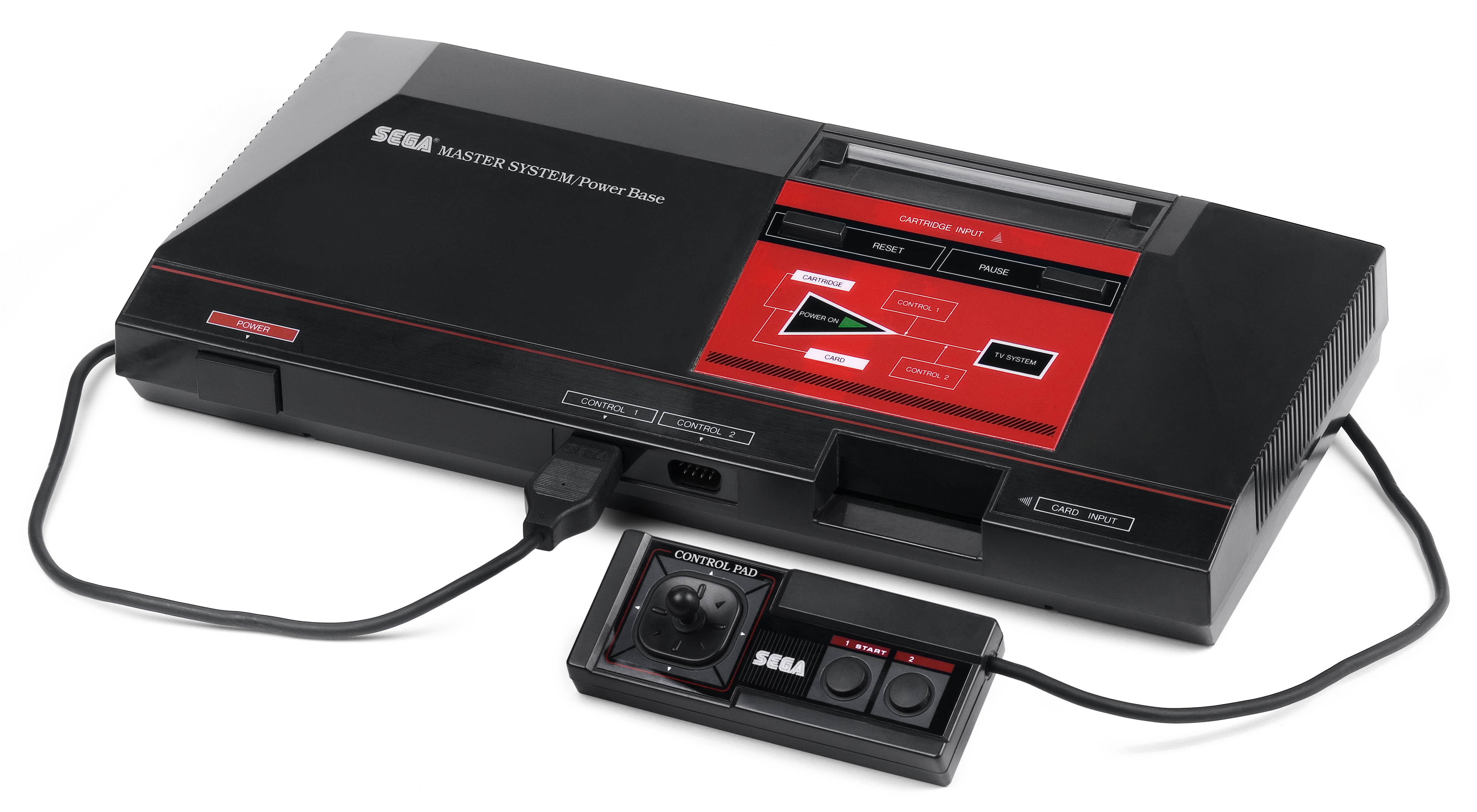
Sega Master System
Year
1986
Launch Price
$200
With Inflation
$532.23
Year
1986
Launch Price
$200
With Inflation
$532.23
Launch Price Analysis: The Sega Master System was often on par or slightly cheaper than the NES in various markets. However, despite its competitive pricing and technologically superior hardware, it struggled to make a significant dent in the NES's dominant market position in regions like North America. Factors like a weaker game library and Nintendo's strong third-party exclusivity agreements limited the SMS's appeal.
32
Nintendo Entertainment System (NES)
Introduced in North America in 1985, the Nintendo Entertainment System (NES) is credited with reviving the video game industry after the crash of 1983. As the Western version of Japan's Famicom, the NES brought classics like "Super Mario Bros." and "The Legend of Zelda" to the world, establishing Nintendo as a dominant force in the home gaming market.

Nintendo Entertainment System (NES)
Year
1985
Launch Price
$199
With Inflation
$539.01
Year
1985
Launch Price
$199
With Inflation
$539.01
Launch Price Analysis: The NES was competitively positioned against its contemporaries like the Sega Master System. What really set the NES apart wasn't just its price point but its robust game library, which included many titles that are now considered classics. Its competitive pricing and compelling games ensured the NES's success during its era.
31
Panasonic Q (GameCube)
The Panasonic Q, launched in 2001, was an exclusive variant of the Nintendo GameCube for the Japanese market. It was distinct in its design, boasting a stainless steel chassis with blue LED illumination. In addition to playing GameCube games, the Panasonic Q also functioned as a DVD player, making it a dual-purpose entertainment device.
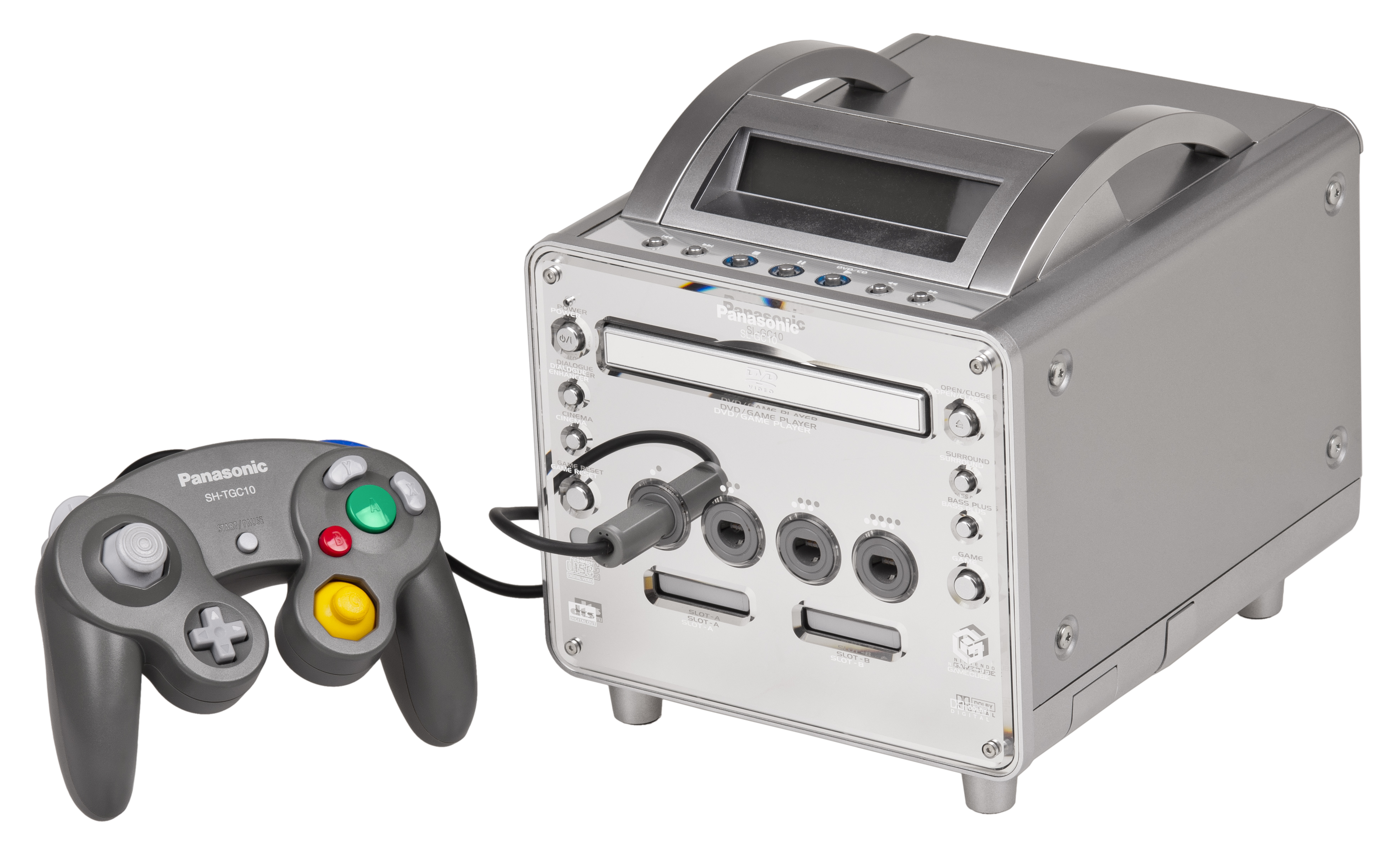
Panasonic Q (GameCube)
Year
2001
Launch Price
$340
With Inflation
$555.96
Year
2001
Launch Price
$340
With Inflation
$555.96
Launch Price Analysis: The Panasonic Q was noticeably more expensive than the standard Nintendo GameCube, largely due to its added DVD playback functionality and premium design elements. However, when comparing it to other dedicated DVD players combined with gaming consoles at the time, the pricing felt justified for those seeking both functionalities in a single device. Despite its features, the Panasonic Q struggled to find wide acceptance, mainly because of its higher cost and limited availability.
30
Sony PlayStation
Sony's PlayStation, commonly known as the PS1 and initially released in 1994, marked Sony's entry into the gaming console market. A fifth-generation console, the PlayStation was lauded for its 3D graphics capabilities, CD-ROM format, and a strong lineup of games. Titles like "Final Fantasy VII," "Metal Gear Solid," and "Tekken" helped to establish the PlayStation as a dominant force in the gaming industry.
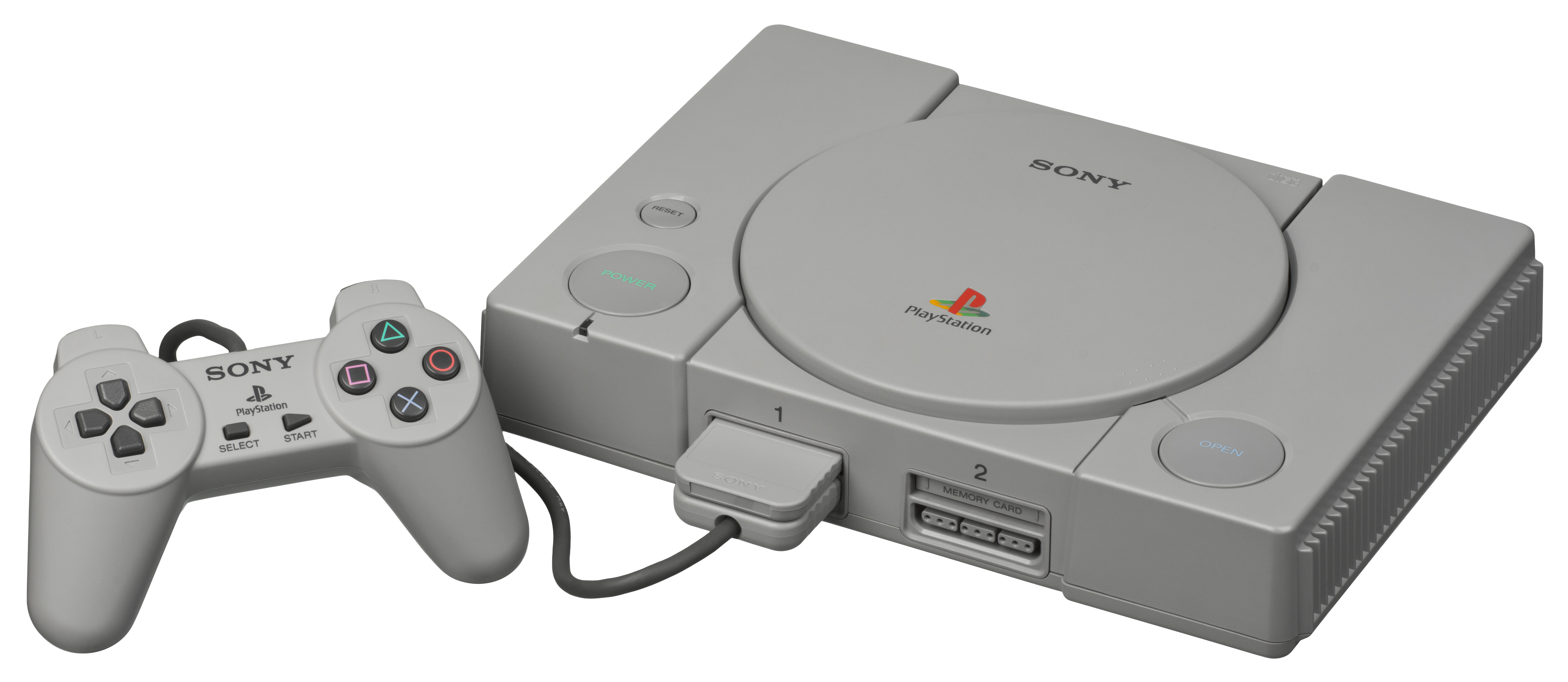
Sony PlayStation
Year
1995
Launch Price
$299
With Inflation
$571.78
Year
1995
Launch Price
$299
With Inflation
$571.78
Launch Price Analysis: The PlayStation was priced competitively, aiming to challenge established players like Nintendo and Sega. Over its lifecycle, aggressive pricing, combined with a vast and appealing game library, allowed the PlayStation to outperform competitors like the Sega Saturn. The value proposition of the PlayStation, both in terms of cost and game offerings, played a significant role in its overwhelming success.
29
Microsoft Xbox Series X
Launched in 2020, the Xbox Series X represents Microsoft's pinnacle of console gaming for the fourth generation of its gaming systems. Boasting a powerful set of internal components, the Series X aims to provide true 4K gaming, improved frame rates, and drastically reduced load times thanks to its custom NVMe SSD. It maintains compatibility with many games from Microsoft's previous consoles, ensuring a broad library for users, and introduces several technological enhancements like ray tracing and the Quick Resume feature.

Microsoft Xbox Series X
Year
2020
Launch Price
$499
With Inflation
$576.30
Year
2020
Launch Price
$499
With Inflation
$576.30
Launch Price Analysis: The Xbox Series X sits at the higher end of the console spectrum, reflecting its premium specifications. Its main competition is Sony's PlayStation 5, which is similarly priced. The two giants of console gaming aim to offer different experiences, and while their price points are comparable, the value proposition is based more on brand loyalty, exclusive game titles, and individual system features than on a direct price-to-price competition. The less powerful Series S model launched at $299.
28
Sony PlayStation 5
Sony's PlayStation 5 (PS5), released in 2020, represents the ninth generation of console gaming. It boasts a powerful custom AMD CPU and GPU, a high-speed SSD for virtually eliminating load times, and support for ray tracing. The PS5 also introduced the DualSense controller, which offers advanced haptic feedback and adaptive triggers. The console's design and architecture were crafted to provide a significant leap in gaming performance and immersion.

Sony PlayStation 5
Year
2020
Launch Price
$499
With Inflation
$576.30
Year
2020
Launch Price
$499
With Inflation
$576.30
Launch Price Analysis: The PlayStation 5 was launched with two versions: the standard edition with a 4K UHD Blu-ray drive and a digital-only edition (which retailed at $299). Both were priced competitively with the main competition, Microsoft's Xbox Series X and Series S. The PS5's price reflects its advanced technology, and while supply constraints initially impacted availability, its value proposition, given its hardware and game offerings, was generally well-received in the market.
27
Vectrex
The Vectrex, launched in 1982, was unique in the realm of home consoles. It was an all-in-one system with a built-in vector display, different from the raster displays most other consoles and computers used. This allowed it to produce sharp, scalable graphics. Games for the Vectrex were cartridge-based, and the system included a built-in game, "MineStorm".

Vectrex
Year
1982
Launch Price
$199
With Inflation
$593.25
Year
1982
Launch Price
$199
With Inflation
$593.25
Launch Price Analysis: The Vectrex was initially quite expensive, especially considering it was a standalone unit with its own screen. This higher cost made it a challenging sell in a market that was rapidly becoming saturated with cheaper home consoles. Despite a price drop and its unique vector-based visuals, the Vectrex couldn't maintain strong sales, especially after the video game market crash of 1983. In comparison to other systems of its time, the price of the Vectrex, combined with the industry's broader challenges, contributed to its niche status.
26
Microsoft Xbox 360
Released in 2005, the Xbox 360 represented Microsoft's next step in the gaming console arena. It featured impressive graphical capabilities, a redesigned interface, and expanded online features through Xbox Live. The 360 also introduced the idea of a console as a multimedia device, with various streaming apps and services available.
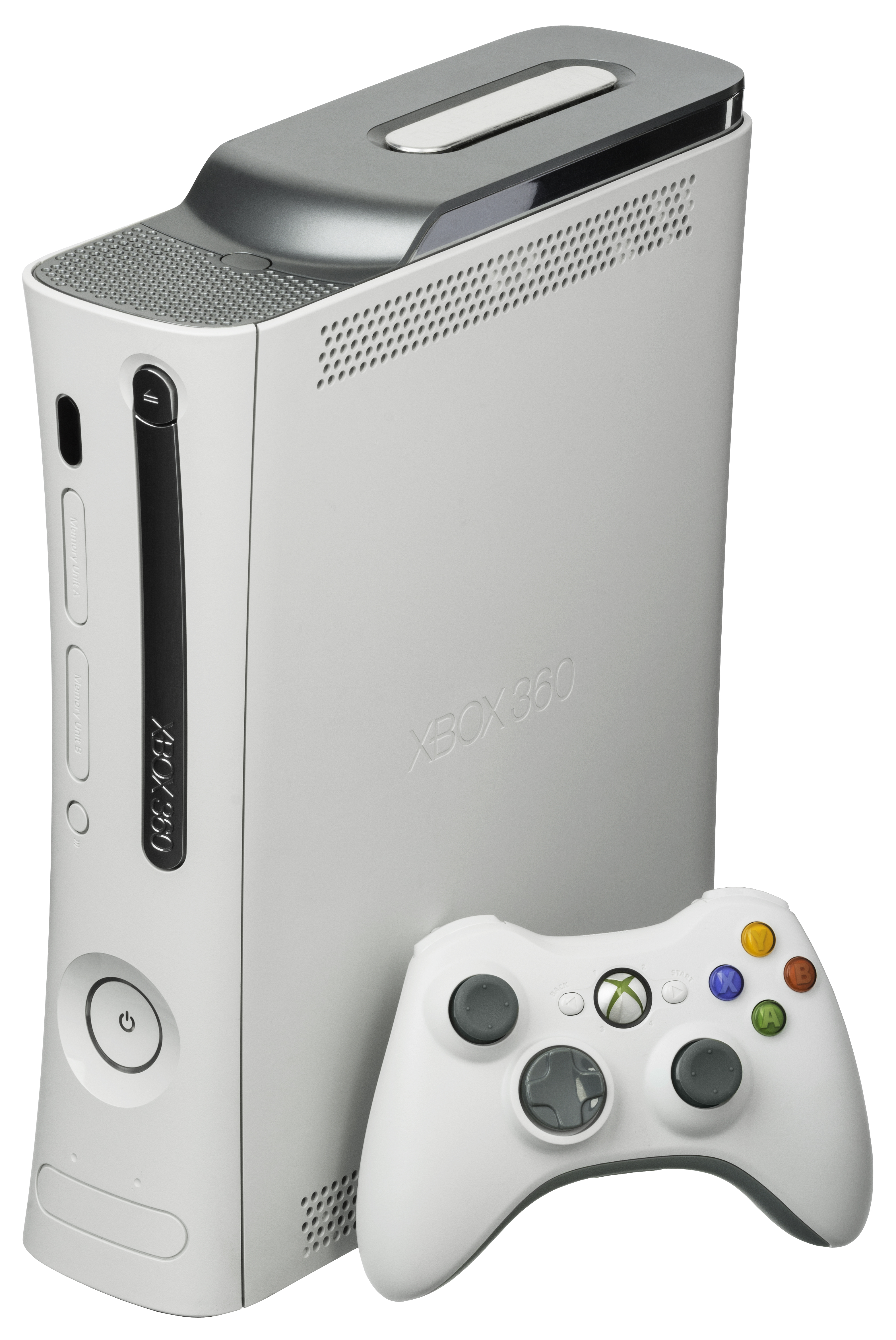
Microsoft Xbox 360
Year
2005
Launch Price
$399
With Inflation
$596.64
Year
2005
Launch Price
$399
With Inflation
$596.64
Launch Price Analysis: The Xbox 360 was introduced with a tiered system, offering a core package at a lower price and a premium package with additional features. This flexible pricing strategy aimed to appeal to a broader audience. The system faced competition primarily from the PlayStation 3 and Nintendo's Wii. Notably, the PS3's initial high price gave the Xbox 360 a competitive edge in the early days of this console generation.
25
Microsoft Xbox One X
Unveiled in 2017, the Xbox One X was promoted as the most powerful console in the world at the time of its release. It was a high-end version of the Xbox One, boasting significant performance improvements, enabling 4K gaming, and enhanced graphics capabilities. The One X aimed to provide a premium gaming experience for enthusiasts and those with 4K displays.

Microsoft Xbox One X
Year
2017
Launch Price
$499
With Inflation
$603.42
Year
2017
Launch Price
$499
With Inflation
$603.42
Launch Price Analysis: The Xbox One X was notably more expensive than the Xbox One S and even its primary competitor, the PlayStation 4 Pro. Its premium price point reflected its superior hardware and capabilities. For gamers who prioritized performance and graphical fidelity, the higher cost was often justified, though it did position the console more as a luxury or enthusiast option rather than a mainstream choice.
24
Sega CD
Also known as the Mega CD outside North America, the Sega CD, launched in 1991, was another add-on for the Sega Genesis/Mega Drive. It allowed the system to play CD-ROM-based games and audio CDs, offering enhanced graphics, larger game storage, and full-motion video capabilities.

Sega CD
Year
1992
Launch Price
$299
With Inflation
$619.24
Year
1992
Launch Price
$299
With Inflation
$619.24
Launch Price Analysis: The Sega CD was more expensive than the Genesis console itself at launch. The higher cost was justified by its advanced CD-ROM technology and the promise of next-generation gaming experiences. While the Sega CD had standout titles and showcased the potential of CD gaming, its high price, combined with a library that was seen as lacking in consistent quality, meant it couldn't fully compete with standalone next-generation consoles that started to emerge.
23
Microsoft Xbox One
Launched in 2013, the Xbox One was Microsoft's successor to the Xbox 360, representing a new generation of gaming consoles. The system was designed as an all-in-one entertainment hub, not only for gaming but also for multimedia experiences, integrating with cable boxes and offering a range of streaming services. The Xbox One was also notable for its emphasis on cloud computing and the inclusion of the Kinect 2.0, an improved motion-sensing camera.

Microsoft Xbox One
Year
2013
Launch Price
$499
With Inflation
$620.37
Year
2013
Launch Price
$499
With Inflation
$620.37
Launch Price Analysis: The Xbox One initially faced criticism for its higher cost compared to its direct competitor, the PlayStation 4. The inclusion of the Kinect was a significant factor in its higher price. However, recognizing the market's feedback, Microsoft later offered packages without the Kinect, effectively reducing the price and making the system more competitive against its rivals.
22
Magnavox Odyssey
Released in 1972, the Magnavox Odyssey holds the distinction of being the world's first home video game console. Designed by Ralph Baer, often called the "Father of Video Games," the Odyssey was a pioneering system that used plastic overlays on the TV screen to simulate color graphics and game backgrounds. It didn't use cartridges in the way later systems did but came with various game cards to introduce different game logic.

Magnavox Odyssey
Year
1972
Launch Price
$99
With Inflation
$699.47
Year
1972
Launch Price
$99
With Inflation
$699.47
Launch Price Analysis: The Magnavox Odyssey was uncharted territory, as there were no previous home consoles to set a precedent. Its price was relatively high for the time, especially considering the console's rudimentary graphics and gameplay compared to arcade machines. The system faced competition mainly from Pong arcade machines and later the home version of Pong. Its sales were also hampered by misconceptions that the Odyssey only worked on Magnavox TVs.
21
RCA Studio II
Introduced in 1977, the RCA Studio II was an early home video game console. Unlike many of its competitors, it used a numeric keypad instead of joysticks or paddle controllers. The system was not particularly advanced for its time and came with built-in games, with additional games available on cartridges.

RCA Studio II
Year
1977
Launch Price
$149
With Inflation
$722.07
Year
1977
Launch Price
$149
With Inflation
$722.07
Launch Price Analysis: The RCA Studio II was less expensive than the early home console leader, the Fairchild Channel F. However, even with its competitive pricing, the Studio II was technologically inferior to its competitors, lacking color graphics and offering a less engaging gaming experience. The system quickly became outdated, especially with the introduction of the Atari 2600, which further marginalized its market presence.
20
Sega Saturn
Launched in 1994 in Japan and 1995 in North America, the Sega Saturn was Sega's 32-bit entry into the fifth-generation console wars. Known for its powerful dual-CPU architecture and its strong lineup of arcade ports, the Saturn was particularly popular in Japan. However, it faced stiff competition internationally, especially from Sony's PlayStation and later the Nintendo 64.

Sega Saturn
Year
1995
Launch Price
$399
With Inflation
$763.88
Year
1995
Launch Price
$399
With Inflation
$763.88
Launch Price Analysis: Pricing played a pivotal role in the Saturn's struggles in North America. Its surprise early launch at $399 caught many off guard and allowed Sony to undercut it with the PlayStation's $299 price tag. This, combined with other factors like a more challenging development environment, meant that despite its technical prowess, the Saturn couldn't gain a significant market share outside of Japan.
19
CD32 (Commodore)
The Commodore CD32, launched in 1993, was a 32-bit CD-ROM based video game console. Touted as the first such system released in Western Europe, the CD32 was essentially an Amiga 1200 computer in a console form, using the Advanced Graphics Architecture chipset to render impressive visuals for its time. It aimed to bring the experience of Amiga gaming to the living room.

CD32 (Commodore)
Year
1993
Launch Price
$399
With Inflation
$798.91
Year
1993
Launch Price
$399
With Inflation
$798.91
Launch Price Analysis: The CD32 was reasonably competitive when matched against contemporary systems. However, its release came at a time when Commodore was facing financial troubles, and though its price was designed to appeal to gamers, the looming releases of other consoles like the PlayStation and the limited marketing capabilities of a financially struggling Commodore made its success short-lived.
18
Atari 5200
Launched in 1982, the Atari 5200 was intended to be a successor to the massively popular Atari 2600. It was technically superior to its predecessor, boasting better graphics and sound capabilities. However, it faced criticism for its non-centering analog joystick and the lack of backward compatibility with 2600 games, which was a significant drawback given the extensive library of games available for the earlier system.

Atari 5200
Year
1982
Launch Price
$269
With Inflation
$801.17
Year
1982
Launch Price
$269
With Inflation
$801.17
Launch Price Analysis: The Atari 5200 was positioned as a more premium offering compared to the 2600. However, this higher price point, combined with the system's noted shortcomings and growing competition from other consoles like the Colecovision, meant it struggled to match the overwhelming success of its predecessor. The price, relative to its value proposition and the competition, was a factor in its more limited commercial success.
17
Magnavox Odyssey^2
The Magnavox Odyssey^2, known in Europe as the Philips Videopac G7000, was released in 1978 as a successor to the original Odyssey. It was a second-generation home video game console that combined video gaming with a home computer experience, featuring a full alphanumeric keyboard. The system offered a mix of unique titles and had the ability to play simple computer games, educational titles, and standard video games.
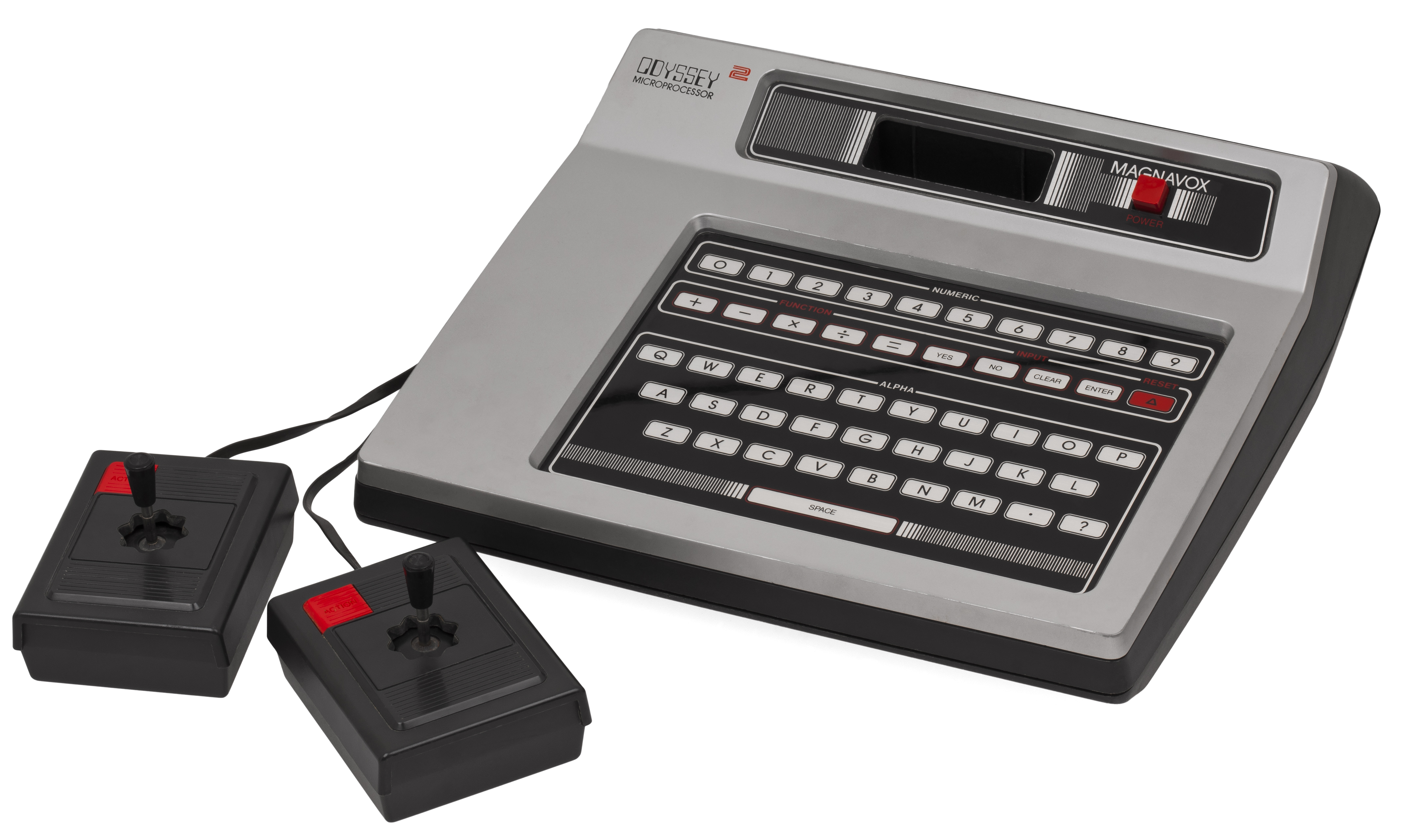
Magnavox Odyssey^2
Year
1978
Launch Price
$179
With Inflation
$805.69
Year
1978
Launch Price
$179
With Inflation
$805.69
Launch Price Analysis: The Odyssey^2 was competitively placed in the market, aiming to rival Atari's 2600. While the console was affordable, it faced stiff competition primarily from the Atari 2600, which had a broader games library and stronger brand recognition. Though the Odyssey^2 had a decent run in some regions, especially Europe, it never reached the iconic status of some of its competitors in the U.S. market.
16
Fairchild Channel F
Introduced in 1976, the Fairchild Channel F holds the distinction of being the first programmable ROM cartridge-based video game console. This innovation revolutionized the industry, allowing players to use interchangeable game cartridges rather than having games hardwired into the system. The console had a unique controller design, combining a joystick with a push-button feature.

Fairchild Channel F
Year
1976
Launch Price
$169
With Inflation
$866.71
Year
1976
Launch Price
$169
With Inflation
$866.71
Launch Price Analysis: The Fairchild Channel F was a trailblazer, so its cost was based on its novelty rather than direct competition. However, with the introduction of the Atari 2600 a year later, which offered a more extensive game library and more aggressive marketing, the Channel F struggled to maintain its market position despite its pioneering status.
15
Sony PlayStation 3
Sony's PlayStation 3 (PS3) was introduced in 2006 as the company's seventh-generation console. The PS3 was a significant technological leap from its predecessor, boasting Blu-ray disc support, a powerful Cell Broadband Engine, and online capabilities via the PlayStation Network. It also had a unique feature with the ability to install another operating system, such as Linux, though this feature was later removed.

Sony PlayStation 3
Year
2006
Launch Price
$599
With Inflation
$873.49
Year
2006
Launch Price
$599
With Inflation
$873.49
Launch Price Analysis: The PlayStation 3 was priced higher than its main competitors, the Microsoft Xbox 360 and the Nintendo Wii. The initial high cost was attributed to the inclusion of the Blu-ray drive and advanced hardware. This pricing strategy faced criticism and was seen as a factor that contributed to a slower start compared to the competition. However, subsequent price reductions and an expanding game library helped improve its market position over time.
14
Atari 2600
The Atari 2600, originally called the Atari VCS (Video Computer System) upon its release in 1977, is one of the most iconic video game consoles in history. It popularized the use of microprocessor-based hardware and game cartridges, allowing users to switch games by swapping out cartridges. The system had a vast library of games and is credited with pioneering the home video game market.
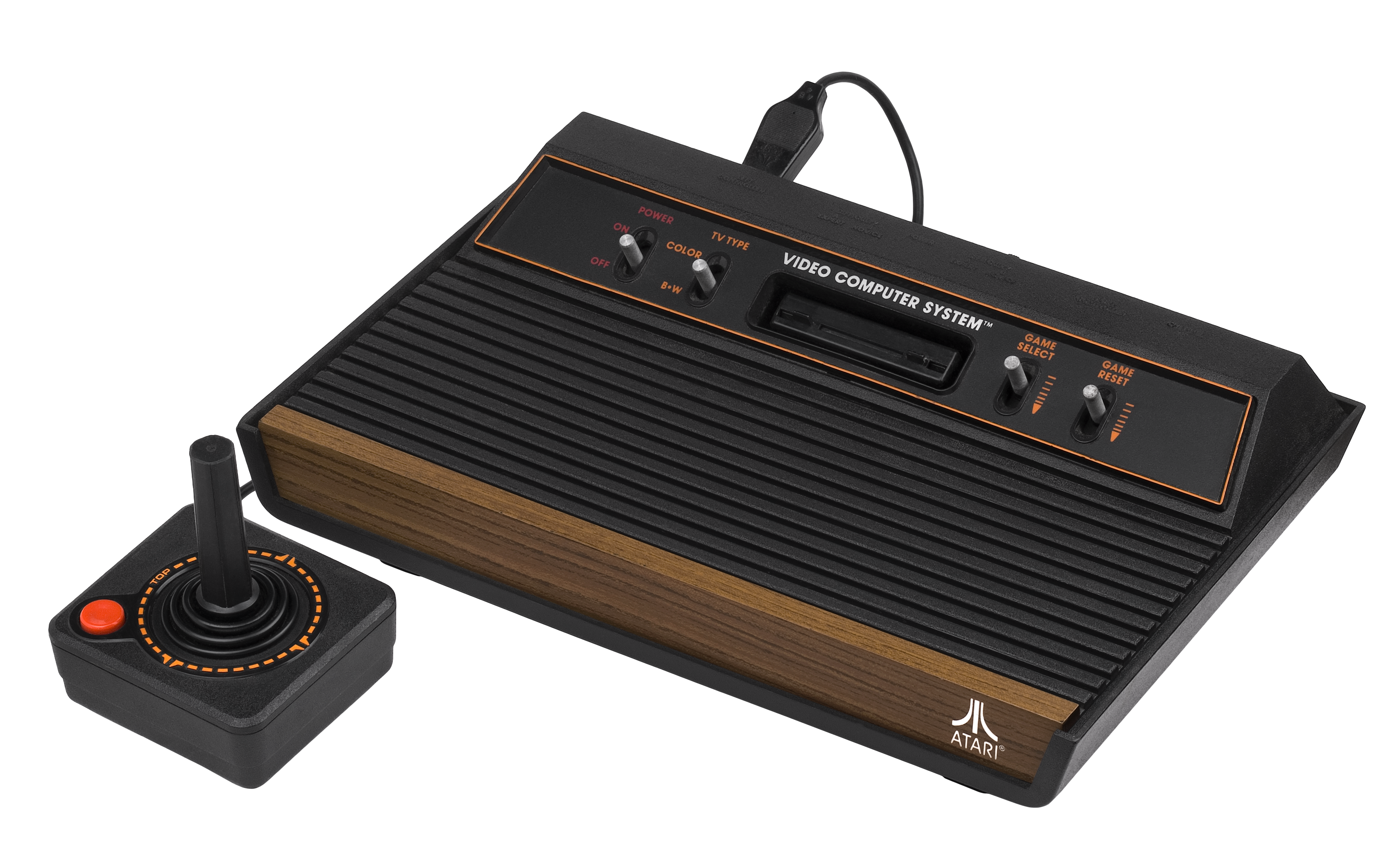
Atari 2600
Year
1977
Launch Price
$199
With Inflation
$958.24
Year
1977
Launch Price
$199
With Inflation
$958.24
Launch Price Analysis: Pricing for the Atari 2600 was initially high, but it reduced over time, making it more accessible to a wider audience. Its main competitors at the time, like the Intellivision, were often priced higher, which gave the Atari 2600 a competitive edge in the market. The system's broad appeal, combined with its relatively affordable price, solidified its position as a dominant force in the early home gaming scene.
13
PC-FX
Developed by NEC, the PC-FX was released in 1994 exclusively in Japan as a successor to the TurboGrafx-16/PC Engine. The system had a unique, tower-like design and focused on delivering powerful FMV (full-motion video) and anime-style games. It was touted for its advanced graphics, especially in rendering 2D sprites.

PC-FX
Year
1994
Launch Price
$498
With Inflation
$961.63
Year
1994
Launch Price
$498
With Inflation
$961.63
Launch Price Analysis: However, in the competitive pricing landscape, the PC-FX was positioned similarly to other consoles available at the time. The challenge was its lack of 3D capabilities, which became increasingly essential as competitors like the Sony PlayStation and Sega Saturn emphasized 3D gaming. As such, despite its reasonable price point, the PC-FX couldn't compete effectively in a market shifting towards 3D graphic performance.
12
Amiga CD32
The Amiga CD32, released in 1993, was Commodore's foray into the CD-ROM based gaming consoles. It holds the distinction of being the first 32-bit CD-ROM based console released in the western market. The system utilized the Amiga Advanced Graphics Architecture chipset and had the ability to play a selection of Amiga games. The Amiga CD32 also boasted impressive audio capabilities and had a decent selection of titles at its launch.

Amiga CD32
Year
1993
Launch Price
$480
With Inflation
$986.49
Year
1993
Launch Price
$480
With Inflation
$986.49
Launch Price Analysis: The Amiga CD32 was relatively competitive with other systems of its era, but it had the misfortune of entering a market that was becoming saturated with options. The impending releases of other major consoles, like the Sony PlayStation, also cast a shadow over its potential success. While the price wasn't a major stumbling block for the CD32, other factors like Commodore's financial difficulties and the rapid evolution of the console market made it challenging for the system to find a strong foothold.
11
Apple Bandai Pippin
The Apple Bandai Pippin was a multimedia technology console, developed by Apple Computer and produced by Bandai in the mid-1990s. It was essentially a platform for Apple Macintosh software titles to be played on televisions. Designed as an inexpensive computer and gaming console, it ran a stripped-down version of the Mac OS and had a CD-ROM drive.

Apple Bandai Pippin
Year
1996
Launch Price
$599
With Inflation
$1105.14
Year
1996
Launch Price
$599
With Inflation
$1105.14
Launch Price Analysis: The Pippin struggled to find its place. It was more expensive than many dedicated game consoles of its time, yet less functional than a full-fledged personal computer. This made it a tough sell to both gamers and typical computer users. Its high price relative to its capabilities and competition, coupled with a limited software library, led to its commercial failure.
10
Intellivision
Introduced in 1979 by Mattel, the Intellivision was one of the primary competitors to Atari's 2600 in the early era of home gaming consoles. The system was renowned for its sophisticated games, unique disc-shaped controllers, and a promise (partially realized) of turning into a home computer. Its graphics and sound were superior to the Atari 2600, providing a more advanced gaming experience.

Intellivision
Year
1979
Launch Price
$299
With Inflation
$1189.89
Year
1979
Launch Price
$299
With Inflation
$1189.89
Launch Price Analysis: The Intellivision was initially more expensive than the Atari 2600, reflecting its superior technical capabilities. However, as the competition grew more fierce, price cuts became common to entice consumers. While the system had a dedicated fan base and offered games that were complex and innovative for their time, its higher price point was a hurdle for broader market penetration.
9
Net Yaroze
Net Yaroze was a special black PlayStation console released by Sony in 1997. Unlike the standard PlayStation, Net Yaroze allowed users to create their own games. This was aimed at hobbyists and budding game developers, coming with development tools and software to help in game creation.
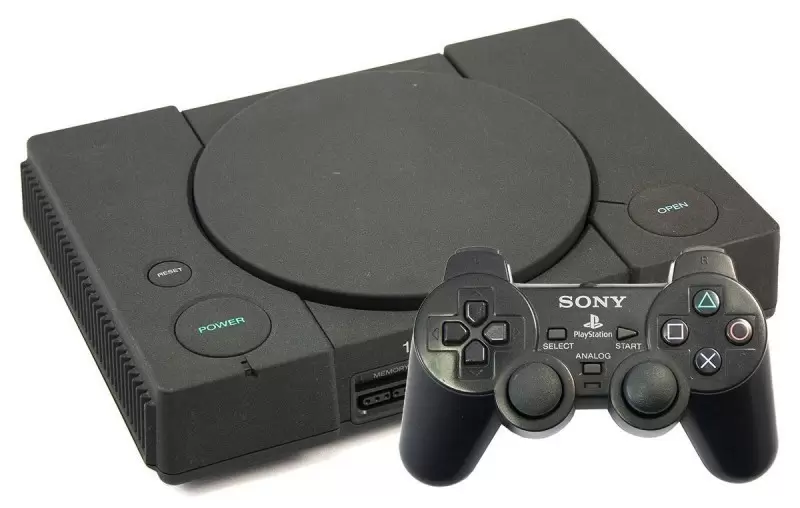
Net Yaroze
Year
1997
Launch Price
$750
With Inflation
$1351.48
Year
1997
Launch Price
$750
With Inflation
$1351.48
Launch Price Analysis: The Net Yaroze was more expensive than a standard PlayStation, given its development-centric features. While it wasn't directly competing with other gaming consoles, its unique offering had a niche appeal. For those interested in game development, the price was justified, but for the average consumer, it was a pricier alternative to the standard PlayStation experience.
8
FM Towns Marty
The FM Towns Marty, introduced in 1993 by Fujitsu, was a home video game console and the first 32-bit system to be released. It was essentially a more consumer-friendly version of Fujitsu's FM Towns PC, designed to capitalize on the growing gaming market. The system offered CD-ROM as its primary medium, which was a forward-thinking choice at the time, and had a variety of titles, some ported from the FM Towns PC.

FM Towns Marty
Year
1993
Launch Price
$700
With Inflation
$1397.81
Year
1993
Launch Price
$700
With Inflation
$1397.81
Launch Price Analysis: The FM Towns Marty was on the higher end, reflecting its advanced hardware and capabilities. While it was technically superior to many of its contemporaries, the price point was a significant barrier for wider adoption, especially when faced with competition from more established brands with broader game libraries and more affordable consoles.
7
Panasonic 3DO
The 3DO, launched in 1993, was a home video game console developed by the 3DO Company, with the most well-known model being produced by Panasonic. The system was technologically advanced for its time, boasting impressive graphics and audio capabilities. Titles like "Gex" and "Road Rash" showcased the power of the system.
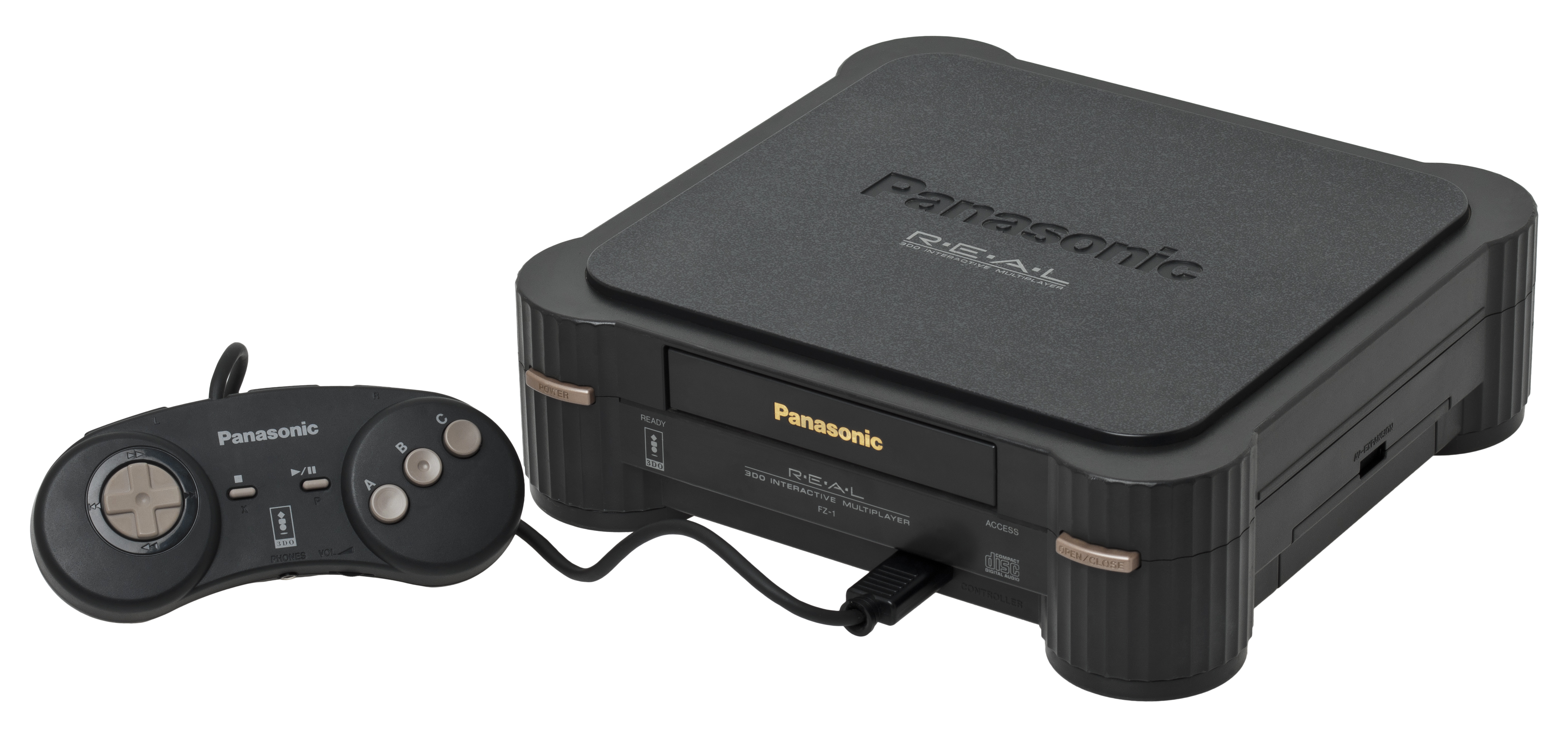
Panasonic 3DO
Year
1993
Launch Price
$699
With Inflation
$1397.81
Year
1993
Launch Price
$699
With Inflation
$1397.81
Launch Price Analysis: The 3DO's initial price point was one of its major downfalls. It was significantly more expensive than its competition, including the Sega Genesis and Super Nintendo. While the system had superior hardware, its high price made it less accessible to a broader audience. This, combined with a lack of standout exclusive titles, hindered its ability to gain a significant market share.
6
Bally Astrocade
The Bally Astrocade, initially released as the Bally Home Library Computer in 1977, was an early video game console and simple computer system. Renowned for its distinctive design, the Astrocade had a unique "pistol grip" joystick controller and utilized game cartridges. Additionally, with an optional programming interface, users could program in the BASIC language, making it one of the first home systems to offer this capability.
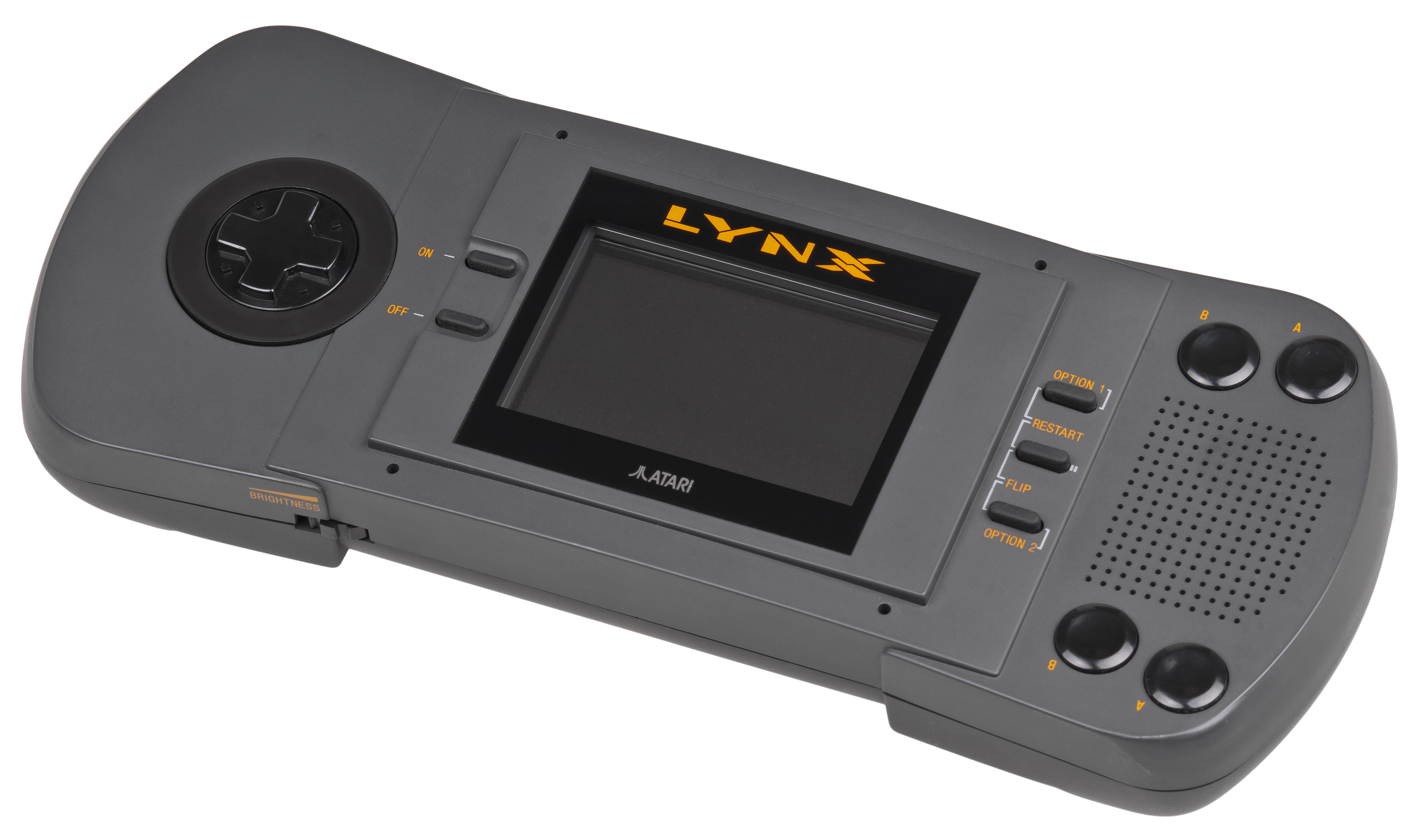
Bally Astrocade
Year
1977
Launch Price
$299
With Inflation
$1441.88
Year
1977
Launch Price
$299
With Inflation
$1441.88
Launch Price Analysis: The Bally Astrocade was initially sold through mail order and was on the higher end compared to its primary competitors, such as the Atari 2600. As the competition intensified, the Astrocade faced challenges in finding a niche in the market, largely because of its higher price point and less extensive game library compared to the more established Atari system.
5
Neo Geo
The Neo Geo, officially launched in 1990 by SNK, was unique for its time. It was both a home console (AES - Advanced Entertainment System) and an arcade machine (MVS - Multi Video System). Known for its powerful hardware, the Neo Geo offered arcade-quality games at home, a feature that was largely unparalleled during its era. Popular titles for the system included games like "Metal Slug," "King of Fighters," and "Samurai Shodown."

Neo Geo
Year
1990
Launch Price
$649
With Inflation
$1452.05
Year
1990
Launch Price
$649
With Inflation
$1452.05
Launch Price Analysis: Regarding its price, the Neo Geo was notoriously expensive. Both the console itself and its games cost significantly more than those of its competitors, such as the Super Nintendo and Sega Genesis. While it offered an unmatched gaming experience in terms of graphical and audio quality, its high price point made it more of a niche product for dedicated enthusiasts rather than a mainstream gaming console.
4
Memorex VIS
The Memorex Video Information System (VIS) was introduced in 1992. It was based on Microsoft's MS-DOS operating system and primarily designed as an interactive CD-ROM player rather than a traditional game console. The system's focus was on multimedia applications, including educational software, reference materials, and a few games.
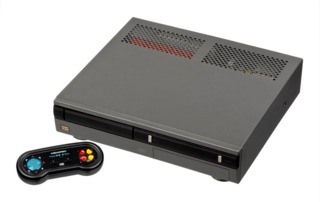
Memorex VIS
Year
1992
Launch Price
$699
With Inflation
$1461.09
Year
1992
Launch Price
$699
With Inflation
$1461.09
Launch Price Analysis: The Memorex VIS found itself in an awkward position. It was more expensive than dedicated game consoles like the Super Nintendo or Sega Genesis and also pricier than other multimedia devices without offering significantly superior performance or content. The system struggled to find a clear audience, especially given its higher cost and lack of a compelling software library, leading to its relatively quick disappearance from the market.
3
Philips CD-i
The Philips CD-i (Compact Disc Interactive), introduced in the early 1990s, was an ambitious multimedia device designed to provide a range of entertainment options, from gaming to educational software and movie playback. The system had various models and was known for its unique titles, including some unusual Zelda and Mario games, resulting from a licensing agreement with Nintendo.

Philips CD-i
Year
1991
Launch Price
$699
With Inflation
$1471.26
Year
1991
Launch Price
$699
With Inflation
$1471.26
Launch Price Analysis: The Philips CD-i was on the higher side when introduced, especially when considering its competition. It was more expensive than gaming-focused consoles due to its broader multimedia ambitions. Over time, the price decreased, but the system still struggled to find its place in a market dominated by dedicated gaming consoles with strong game libraries.
2
LaserActive (Pioneer)
Pioneer's LaserActive, released in 1993, was an ambitious multi-media system that played LaserDiscs, CDs, and proprietary LD-G ROMs. It could be expanded with modules, allowing compatibility with Sega Genesis or TurboGrafx-16 games. The system aimed to be an all-in-one entertainment solution, playing both games and movies in high quality for the era.
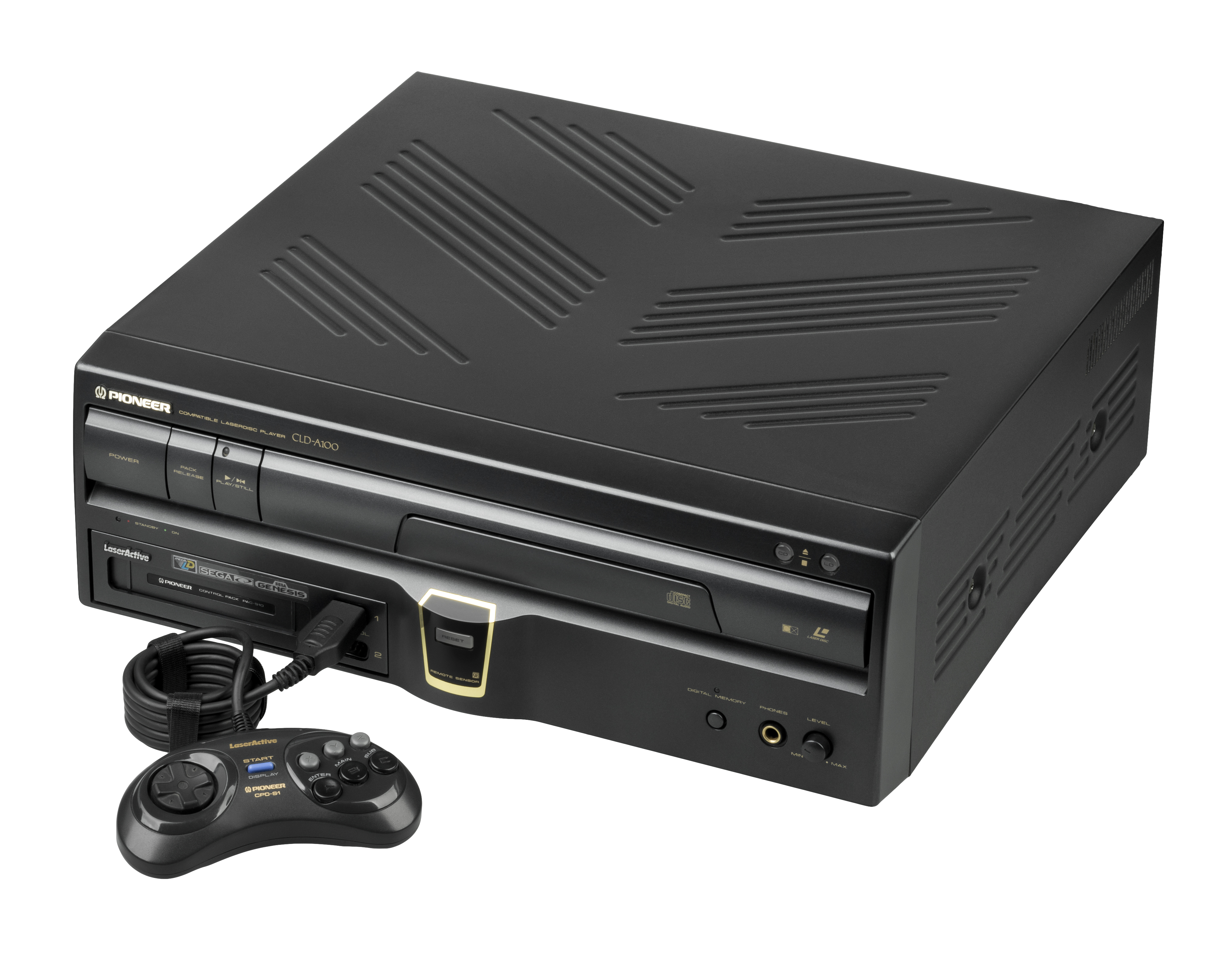
LaserActive (Pioneer)
Year
1993
Launch Price
$970
With Inflation
$1967.33
Year
1993
Launch Price
$970
With Inflation
$1967.33
Launch Price Analysis: Pricing was one of the LaserActive's most significant challenges. The base unit was extremely expensive, and the cost further increased with additional modules. When compared to specialized systems like the Sega Genesis, Super Nintendo, or standalone LaserDisc players, the LaserActive's high price point made it hard to justify, especially given its limited exclusive game library. It remains a unique footnote in gaming history as an early attempt at a converged media device.
1
FM Towns Car Marty
The FM Towns Car Marty, produced by Fujitsu, was released in 1994 as a unique in-car entertainment system. An evolution of the FM Towns Marty home console, the Car Marty was designed specifically for use in automobiles. It could be integrated into a car's dashboard and boasted features such as GPS navigation alongside its gaming capabilities. This made it one of the early examples of multi-purpose in-car entertainment systems.

FM Towns Car Marty
Year
1994
Launch Price
$1406
With Inflation
$2712.00
Year
1994
Launch Price
$1406
With Inflation
$2712.00
Launch Price Analysis: The FM Towns Car Marty was a niche product and considerably expensive, especially when compared to typical home consoles. Its main competition wasn't other gaming consoles, but rather in-car entertainment systems. Given its specialized nature and limited audience, it commanded a premium price, making it a luxury addition to vehicles rather than a mass-market product.